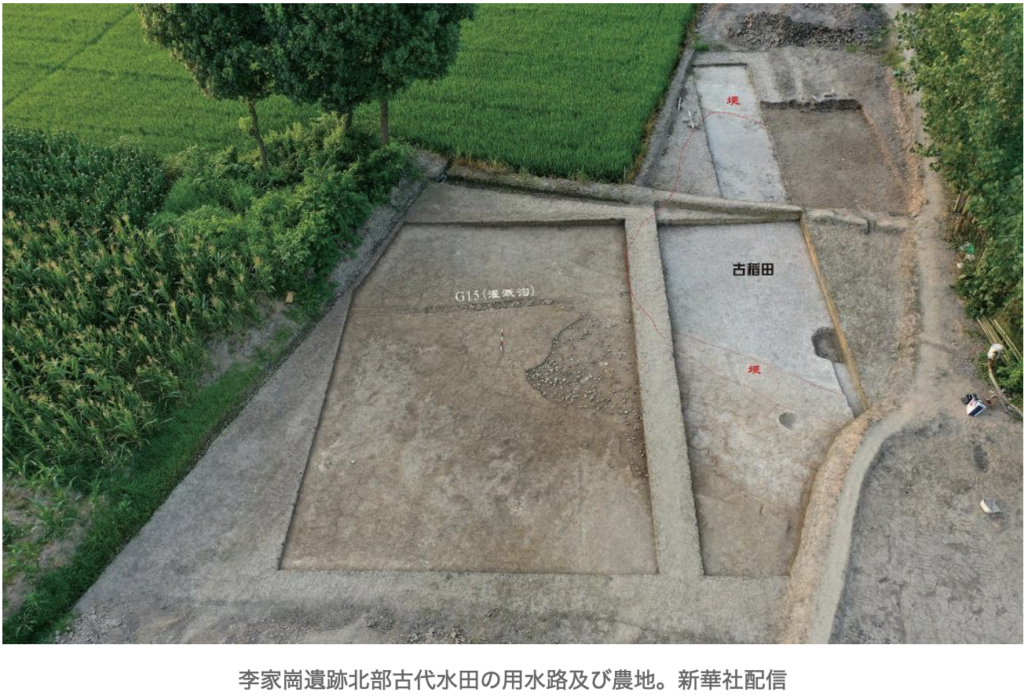http://jp.enghunan.gov.cn/hnjapanese/HunanNews/202501/t20250127_33576766.html
The Hunan Provincial Institute of Cultural Relics and Archaeology recently discovered two ancient rice field remains in Changde City, which sow that local indigenous people began cultivating rice more than 8,000 years ago.
The two ancient rice fields discovered at the Lijiagang site are located around the moats to the north and south of the site. The sedimentary strata of the southern ancient rice field show a gray-brown to yellowish brown color from top to bottom, and when combined with the strata relationship such as the ridges and rice fields, it is estimated that there were three periods of rice fields here, from early to late.
The large number of rice plant opals obtained by archaeological experts from the rice field strata at the Lijiagang site provided solid evidence of the existence of ancient rice fields. According to the measurement and analysis of the rice plant opal concentration, the content of most of the soil samples was more than 5,000 grains per gram, and some reached more than 10,000 grains.
What kind of rice cultivation techniques did the indigenous peoples have more than 8,000 years ago? A narrow and shallow ash ditch was connected to the ancient rice paddy in the north as an irrigation canal. A clear symbiotic relationship was also found between the northern part of the rice paddy and the earlier moat, which suggests that this moat served the function of drawing water. This moat was dredged and excavated at least three times, which not only shows that this was an important area for water resource utilization, but also that the excavation of these irrigation canals was closely related to the ancient rice paddies. The clear structures of the rice fields and irrigation canals show that the indigenous people had mature rice cultivation management.
(Image provided by People’s Daily)

